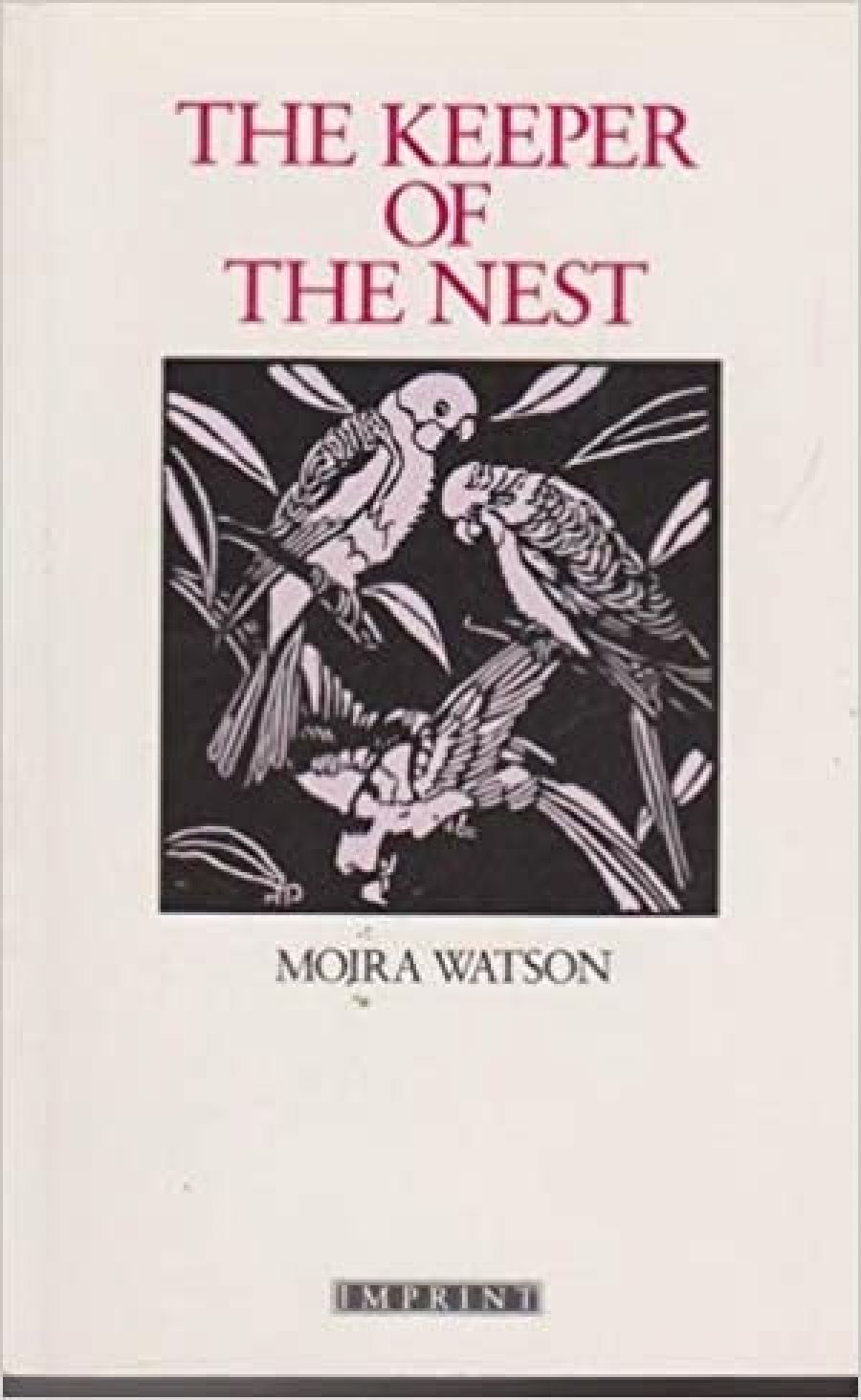
- Free Article: No
- Contents Category: Fiction
- Review Article: Yes
- Online Only: No
- Custom Highlight Text:
Comedy and violence co-exist happily in this delightful first novel about a group of weekend bird watchers who themselves become the objects of scrutiny.
- Book 1 Title: The Keeper of the Nest
- Book 1 Biblio: Angus & Robertson, 178 pp, $12.99 pb, 0-207-16634-X
The technique at first seems a little contrived but gradually the layers of interconnecting detail build up and, because they are interspersed with facts about feathered varieties, such as the female European greenfinch and the black-faced cuckoo shrike, the reader gradually assumes the role of birdwatcher. This evokes a strange, almost voyeuristic atmosphere as the antics of the characters are silently observed and noted and the reader is privy to intimate vignettes of social behaviour.
Watson’s eye for detail is both sharp and accurate as she shows that there’s not much love or camaraderie within the group and the only thing holding it together is the interest in birds. Her observation is no less telling when she shows the private anguish of the characters within the confines of their own ‘nests’.
And yet, not all the observations are painful. There’s one hilarious scene of a children’s birthday party where the snobbishness of the parents is matched only by the greed of the young guests. The behaviour of the bird watchers is little better than that of the brats at the party and, in turn, this produces a parody of the avarice and crassness of society at large.
The time span covered in the novel is brief, the action taking place over one weekend, with flashbacks interspersed as necessary to reveal motivation. The latest expedition is fraught with problems from the start when two new watchers are invited to attend with the result that existing relationships are left damaged or beyond repair. The weekend, however, provides a catharsis for the gentler characters, the nest builders of the group who are open to attack from the more predatory members and from birds of prey outside. The growing tensions finally explode in violence, shattering the peace of the surrounding bush, and destroying the illusion of unity. In the end it is the birds of prey who are destroyed or exposed in their true colours while the victims learn from their experience.
The book is a comedy of manners overlaying incisive social commentary, but it nevertheless offers the reader a sense of hope. It is therefore surprising to find the poem ‘Requiem’ printed on the last page. Its message of chaos, violence, the destruction of the environment is, no matter how true or topical, a heavy-handed touch. It jars with the rest and smacks of moralising. Other than that – delightful.


Comments powered by CComment